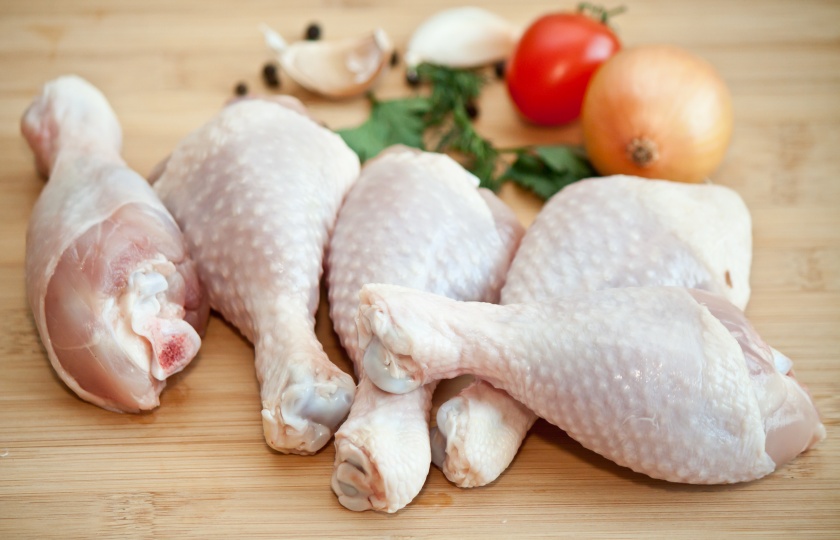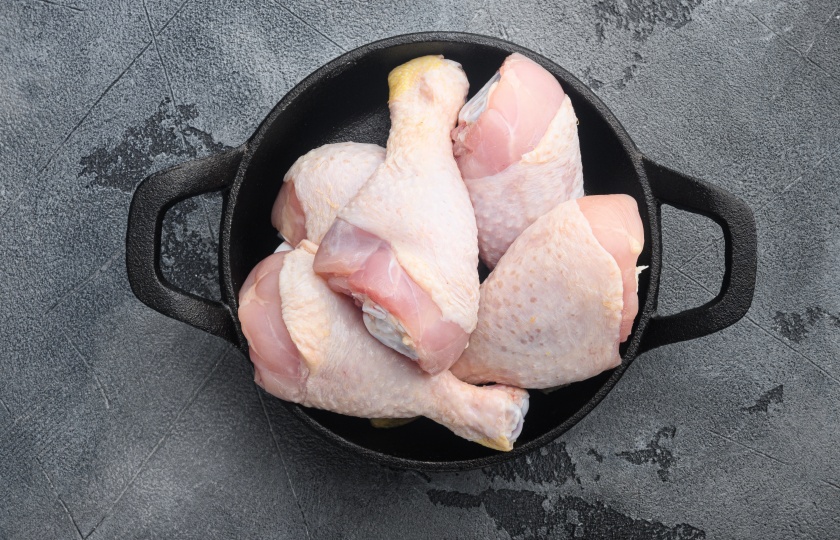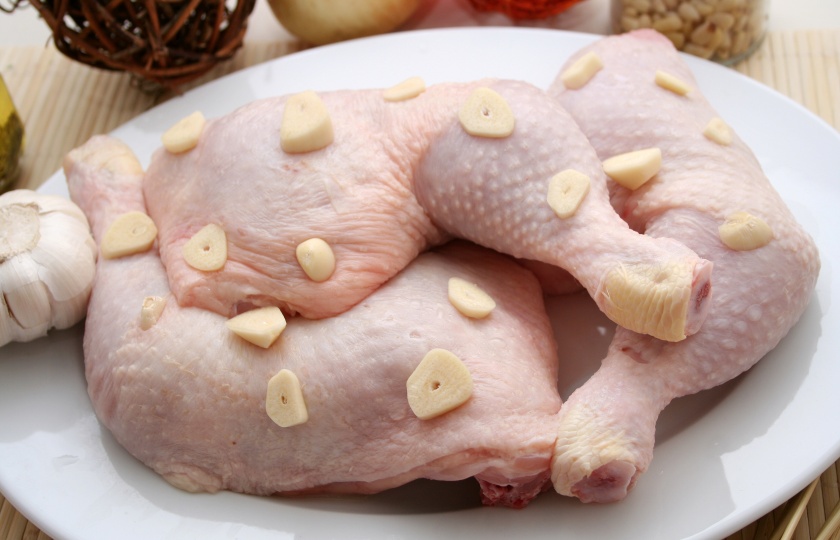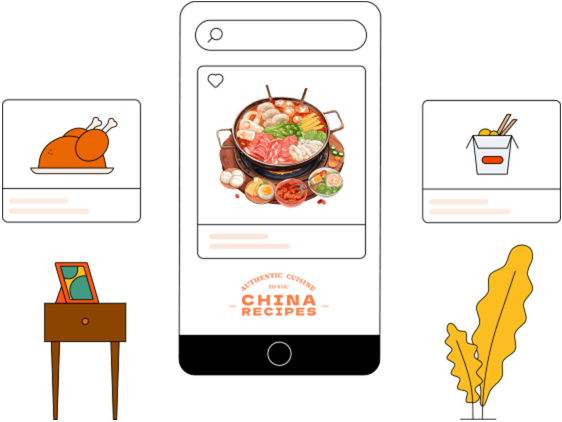Cooking Time: How Long To Boil Chicken Drumsticks

How much time to boil chicken drumsticks?
After bringing to a boil over high heat, turn to medium or low heat and simmer for 15 - 20 minutes. This is just right as the part with the bone won't get overcooked easily. If you're making a cold dish or shredding the meat, you can extend the cooking time to 25 minutes to make it softer and more tender.
Also, pay attention to controlling the heat. Cooking over high heat throughout is likely to make the outer part mushy while leaving the inside undercooked. If you're using the chicken drumsticks for making curry or in a stew, you can reduce the cooking time to about 12 minutes since they will be cooked further with other ingredients later.
It's best to thaw frozen chicken drumsticks in advance. Otherwise, you need to add 3 - 5 more minutes to the cooking time.
Should I start with cold or hot water for boiling drumsticks?
When boiling chicken drumsticks, it is more recommended to start by putting them into cold water. The advantage of doing this is that the meat is uniformly heated from the inside out, gradually draining the blood and fluid around the bone. The resulting soup base is clearer and the meat is less likely to become tough.
Although putting the drumsticks into hot water saves time, the high temperature causes the outer layer of the meat to contract rapidly, and the blood foam inside is liable to be trapped within the meat. This may make the boiled chicken drumsticks have a fishy smell. Especially when making poached chicken or cold dishes, starting with cold water can better maintain the integrity of the shape.

What seasonings to add when boiling chicken drumsticks?
Here are several basic combinations:
Basic Seasonings
3 slices of ginger, 1 bunch of scallions knotted together, 1 tablespoon of cooking wine - These three seasonings can basically remove the fishy smell and enhance the freshness. Add salt 5 minutes before turning off the heat so that the meat doesn't become tough.
For a More Aromatic Soup
Add a small handful of dried shiitake mushrooms or a few Chinese dates, and the soup base will have a natural sweetness. Don't use too much of strong spices like star anise or bay leaves. Half a star anise or 1 bay leaf is enough, otherwise, they may overpower the natural flavor of the chicken.
For Cold Dishes or Shredded Chicken
You can add a few more Sichuan peppercorns and half a spoonful of white pepper powder while boiling. Let the chicken cool in the soup after boiling for a more flavorful result. But remember that Sichuan peppercorns will become bitter if cooked for too long. It's best to fish them out after boiling for 10 minutes.
Small Tips
Don't rush to add soy sauce or oyster sauce. Dark-colored seasonings like these will make the soup cloudy. If you plan to use the original soup for cooking noodles or stewing other dishes, it's safer to season the chicken separately at the end. I've personally tried adding a small piece of apple while cooking, which can soften the texture of the meat and make it taste more tender. But don't add too much, otherwise, the soup will turn sour.
How do you tell if chicken drumsticks are fully cooked?
If you have a food thermometer on hand, insert it into the thickest part of the meat, avoiding the bone. A temperature of over 167°F (75°C) is the safest. This is especially important for frozen chicken drumsticks as the internal temperature can be uneven. Another sign of doneness is when the floating foam turns white and stops being produced in large amounts during the boiling process.
If you don't have a thermometer, you can also observe the bone joint. When the chicken is fully cooked, the joint cartilage will be clearly exposed, the meat around the bone will contract slightly, and there will be a gap of about 2 millimeters between the meat and the bone.
Poke the thickest part of the chicken drumstick with the tip of a chopstick. If it can easily penetrate to the bottom and the juice that flows out is clear and without a pink tint, it means the chicken is cooked.
Overcooked chicken drumstick meat will become flaky and fall apart. It will be easy to separate the meat from the bone when picked up with chopsticks.
If it's a chicken drumstick with skin, the skin will become smooth and taut when fully cooked. When it's half - cooked, the skin still feels a bit limp. After turning off the heat, cover it and let it sit for five minutes to ensure that the part close to the bone is completely cooked.

Do drumsticks cook quicker than thighs?
Chicken drumsticks do cook a bit faster than chicken thighs, but it specifically depends on their size and whether they have bones.
Bone - in chicken drumsticks have relatively firm meat and slender bones. Boiling them for 15 - 20 minutes is usually sufficient. On the other hand, chicken thighs have thicker meat and larger bones, so they may need an additional 5 - 8 minutes of boiling.
If you are cooking both parts simultaneously, it is advisable to put the chicken thighs in the pot first. Then, add the drumsticks after a 3 - minute interval. This way, they will cook more evenly. Additionally, chicken thighs have more connective tissue. After boiling, you can let them sit covered for an extra 5 minutes before taking them out. This will make the meat softer and more tender.
Frozen chicken drumsticks or thighs must be completely thawed before boiling; otherwise, the outer layer is likely to overcook.
How long can boiled drumsticks last?
Boiled chicken drumsticks can last for about 3 days in the refrigerator and up to 1 month in the freezer. I would recommend eating them as soon as possible because the taste is not as good as when they are fresh.
Refrigeration Storage Tips
After the drumsticks have completely cooled down, put them in a sealed container. Place a sheet of kitchen paper at the bottom to absorb moisture and prevent the meat from getting soggy due to water vapor. If you don't plan to eat them within two days, you can brush a thin layer of olive oil on the surface to lock in the moisture.
Methods for Longer Freezing
Debone the chicken drumsticks and tear the meat into strips. Divide the meat into portion sizes according to your consumption at each meal and put them into food storage bags. Flatten the bags and squeeze out the air before sealing. This way, it takes less time to thaw, and it's also convenient to directly add them to soups or stir - fry dishes.
When thawing, don't leave them at room temperature as this can easily lead to bacterial growth. You can move them to the refrigerator the night before to thaw.























